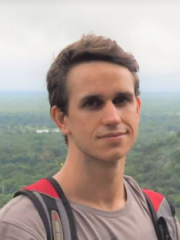
Mine Site and Mine Water Remediation
Microorganisms are major contributors to the world's nutrient and metal cycles. These processes, over billions of years, have shaped and formed the landscapes of today. For example, microorganisms contribute to cycling of iron minerals that appears to drive the evolution of iron-rich crusts, which control the local and regional geomorphology in many ancient landscapes.
By understanding the fundamental interactions between microorganisms and minerals/metals, both how microorganisms influence their environment and the environment alters the microbial community and metagenomes, my work is focused on developing novel biotechnologies to serve the mining company in regions of mine rehabilitation, mineral processing and mineral exploration.
Biography
Alan conducted his PhD developing new strategies for the remediation of iron ore mines in Brazil. Using high resolution imaging and analytical techniques including FIB-SEM, TEM, FT-IR and Raman microspectroscopy, NanoSIMS and several synchrotron techniques including XFM, XANES, microFT-IR and microdiffraction. These techniques are coupled with environmental microbial DNA sequencing to characterise microbial communities. Increasingly, Alan's research includes metagenomics to understand microbial capabilities and correlating genetic responses with the environment.
Industry
Industry engagement increasingly forms the driver for Alan's work, aiming to resolve mine remediation, mineral processing and mineral exploration. As such, Alan's work spans a wide range of industry partners and engagement forms.
Collaborations
Alan works between CMLR, CWiMI at the SMI as well as appointments in the School of Earth and Environmental Sciences (SEES) and the Advanced Centre for Ecogenomics (ACE). Alan acts as a geomicrobiological partner on many projects.
